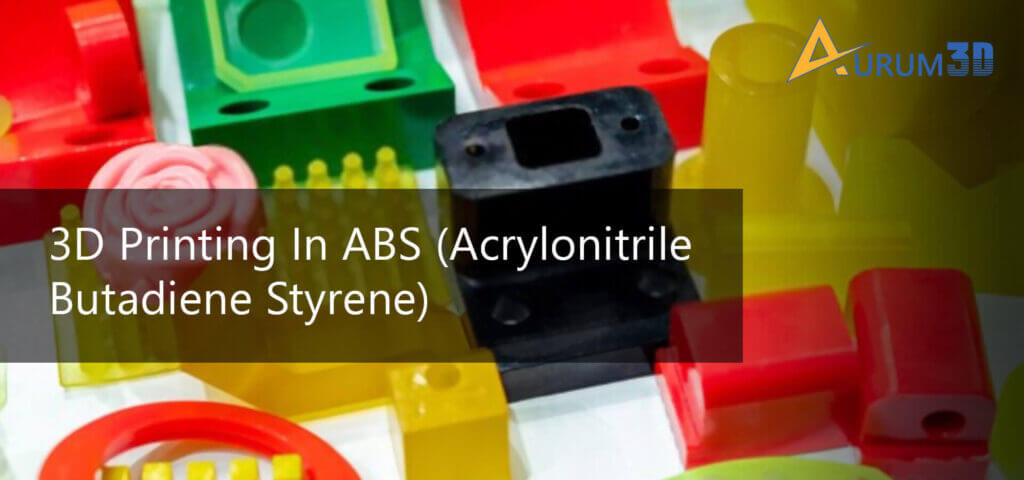Acrylonitrile Butadiene Styrene (ABS) is a moderate value substance, considerable for printing, resistant, and long-lasting segments that can hold out against intense heat. ABS is almost one of the well-liked thermoplastics for 3D printers. ABS is generally used in the diversity of customer and commercial utilization. As a 3D printing material, ABS is considered to be indestructible and a better substance compared to PLA, another preferred thermoplastic, even though the compact portion is delicate to exert. Largely worn in the clan gadgets zone, it is as well as established in boat hulls, trinket pieces, toys, and mostly in the well-known bricks evolved by LEGO. ABS thermoplastic is mostly popular in the Fused Deposition Modeling (FDM) 3D printing industry.
Production Method
ABS is one of the initial plastics to be cast-off in commercial 3D printers. It was introduced in 1990. ABS thermoplastic polymer is known as ‘terpolymer’ and acquired the mass frequently by polymerization of acrylonitrile and styrene in the existence of polybutadiene- 20% acrylonitrile, 25% butadiene, and 55% styrene. Utilizing these segments can consequently alter the possessions of ABS, styrene as an example is the component that proffers ABS its inflexibility and intensity, while butadiene proffers its Collison impedance and modest heat possessions.
One of the leading customers of ABS thermoplastic is the plastic injection industry: the substance has superior inflexibility soaring collision impedance and considerable delicacy while enduring most minimal in the label of value. It has already been a well-known substance in the 3D liquify overthrow printing commercial for a few years. It is one of the initial filaments which was used in the industry with PLA- both substances are simpler to print compared to other technological and low priced thermoplastics.
Why is 3D Printing with ABS a Good Idea?
- Strong technical properties: Acrylonitrile Butadiene Styrene (ABS) enchants considerable technical possessions, especially when differentiating with PLA. Its harshness, permanence, adaptability build substantial substances for “ wear and tear “ execution. Contrasting PLA, ABS can as well hold out against apex inversion and has a superior expansion at interrupt.
- Post-processing: ABS imparts itself competently to diverse post-manufacturing technologies. Post manufacturing steps like buffing, coloring with acrylic paints, gumming, grinding, instructing, and trimming can be done through ABS fragments. ABS can as well be flattened by acetone to reach a shiny plane.
- New materials: ABS can be worn to make substances with intensified possessions. Similar substances embrace possession like bio-compatibility, friction, semi-transparency, etc.. Similar to nylon, ABS can as well be assorted with further substances for considerable technical possessions, e.g. polycarbonate ABS with higher stability intensity friction.
- Accuracy: In 3D printing, ABS can make magnificently detailed parts. ABS prints are prone to magnificently correct with the minimal properties as minor as 1.2mm, even though it should be eminent that printers’ surroundings and complications of a scrap are mostly regulated to an extent of precision.
Some Tips for 3D Printing with ABS
- ABS is tactful to inversion changes, and this can root the substance’s diminution. Because of this, a humid print bed is essential when printing is done with ABS. To interpret diminution, it is to be assured that the print bed is humid to 110º C. It is as well wise that a 3D printer has a compound to interpret any quick changes.
- As a regulation of pollex, it is commonly good execution to print the few initial layers of your fragment with an inversion 10 to 20 degrees excessive to make sure that layers aptly cohere to the print bed.
- For superior layer adherence of the print bed as well contemplate awning with Kapton tape. This will as well build it simpler to virtuous the print bed subsequently. Another alternative may be ABS sludge: blend a small amount of ABS fiber with acetone and layout above the print bed in advance of printing.
- As ABS manufactures annoying smokes when it gets heated, make sure you print in good ventilation.
- As ABS fibers captivate condensation, don’t disclose them to air and water for an extended period. It is pivotal to cache the fiber rolls in the secured vessel in cool and dry surroundings to intercept indignity.
Limitations of 3D Printing in ABS
- ABS is absorptive means it captivates the condensation of On condition that not hoarded accurately, muggy ABS fibers conduct to any impoverished standard printing or maybe to a malfunction printing method because of the obstructing of a nozzle.
- ABS substances can be blemished extended subjection to sunlight, which pessimistically influences the standards of print. So for the exertion that will be disclosed to the straight ultraviolet light, it’s superior to select UV impenetrable fiber.
- While functioning with ABS, conventional inversion surrounding is needed to make sure that a print crisps steadily. A moderate chilling method intercepts the fracture of a fragment and as well superintendent for superior layer adherence. Supervising the correct inversion nevertheless can be a bit time-devouring and can entail few sequences and misconceptions.
- While heating, ABS releases enormous stinking smokes which roots annoyance and migraine. Accordingly, 3D printing in ABS needed a functioning expanse with adequate ventilation. Although numerous FDM printers are furnished with any compound or a riddle and a ventilator for smoke removal.
- Quick inversion becomes different throughout the printing process as well as root printing matters like buckling and diminution. Nevertheless, these consequences can be minimal adapting to some tips.
| Pros of ABS in 3D Printing | Cons of ABS in 3D Printing |
| Cost friendly | Weighty swaddling |
| Superior collision | Requires heated printer bed |
| Barely excluding and slinging offers models even conclude. | Manufacture a pervasive smell while printing |
| Superior heat resistance | Fragments are likely to shrink commanding to proportional in-exactitude. |

